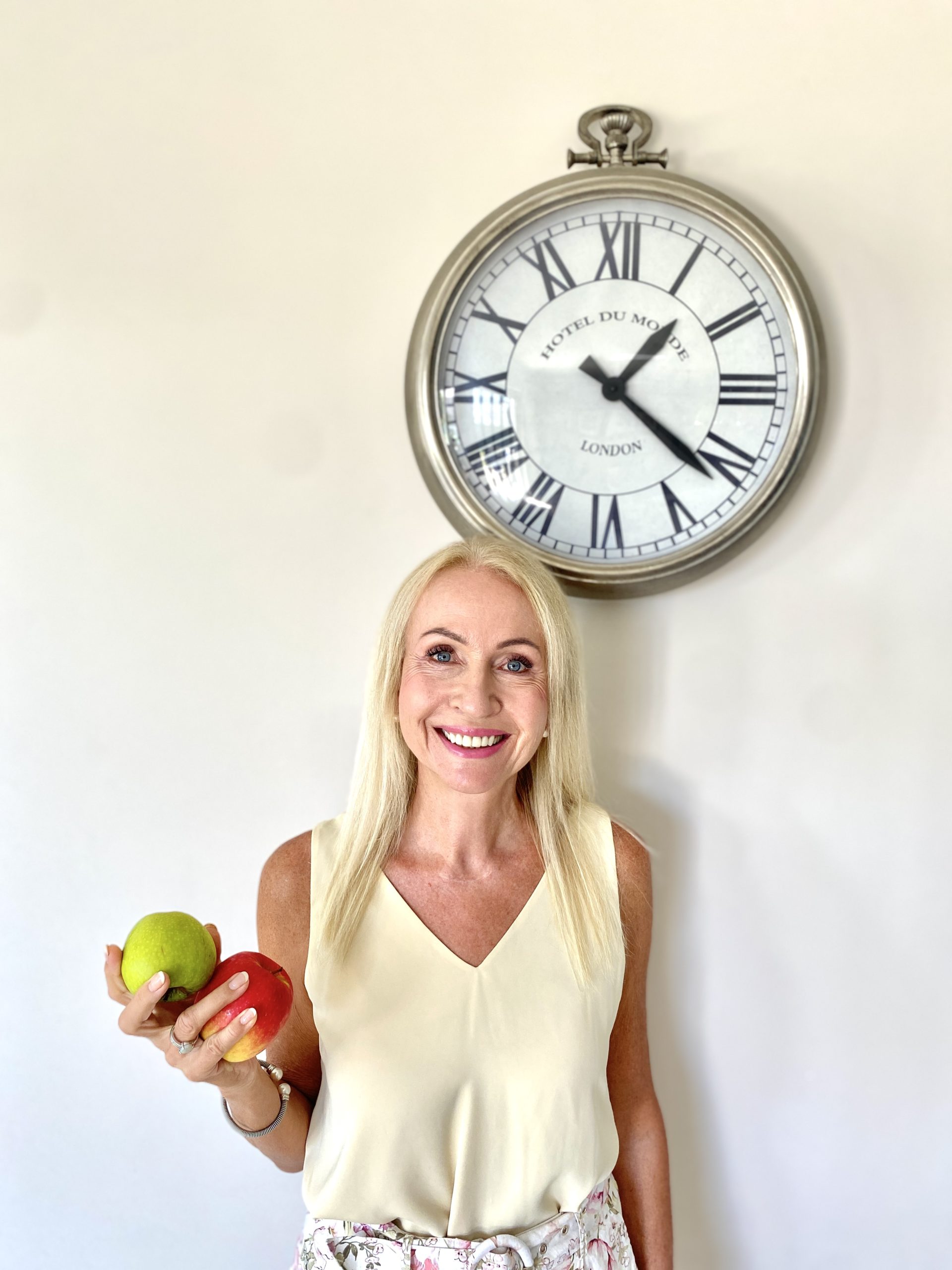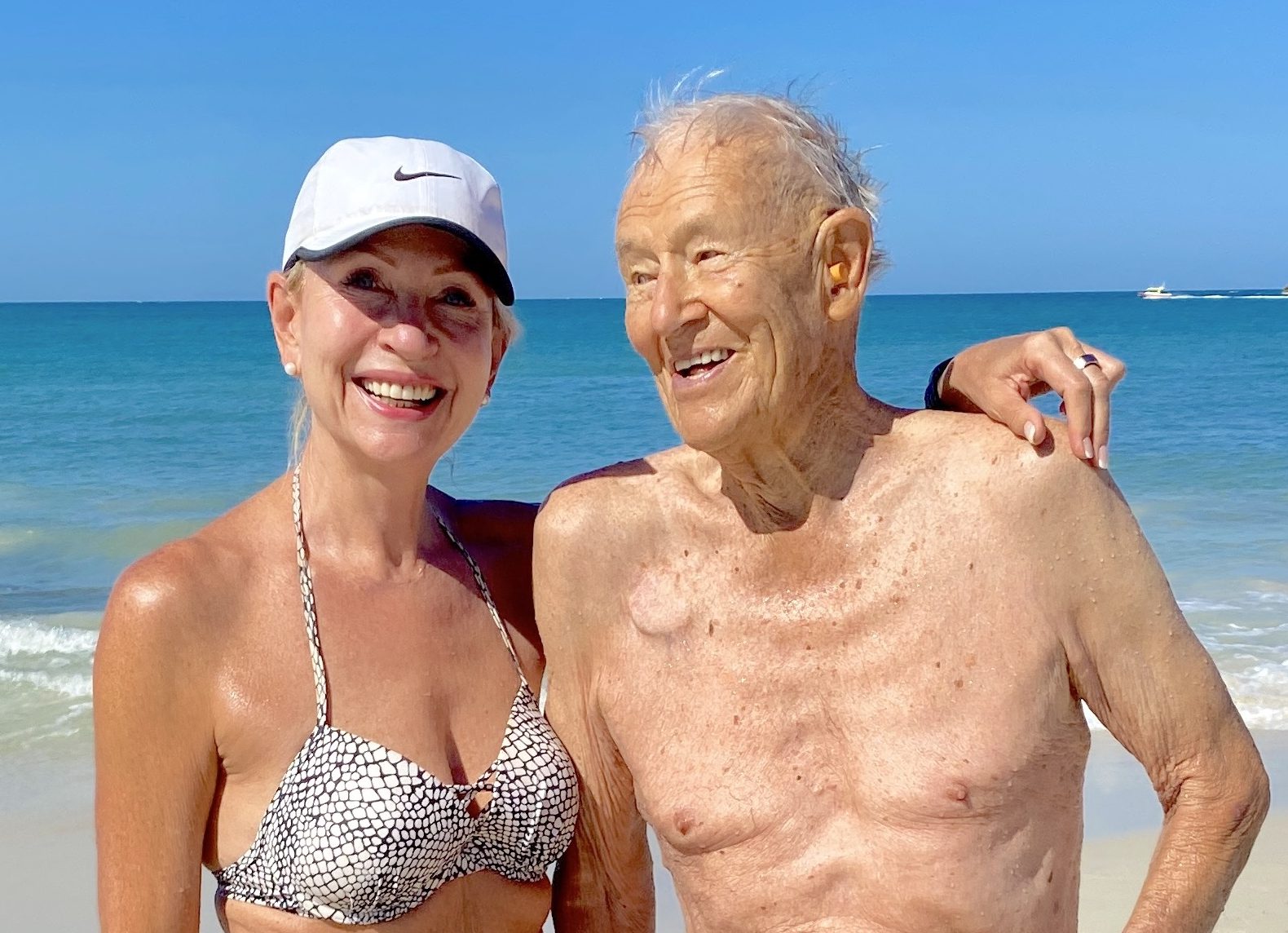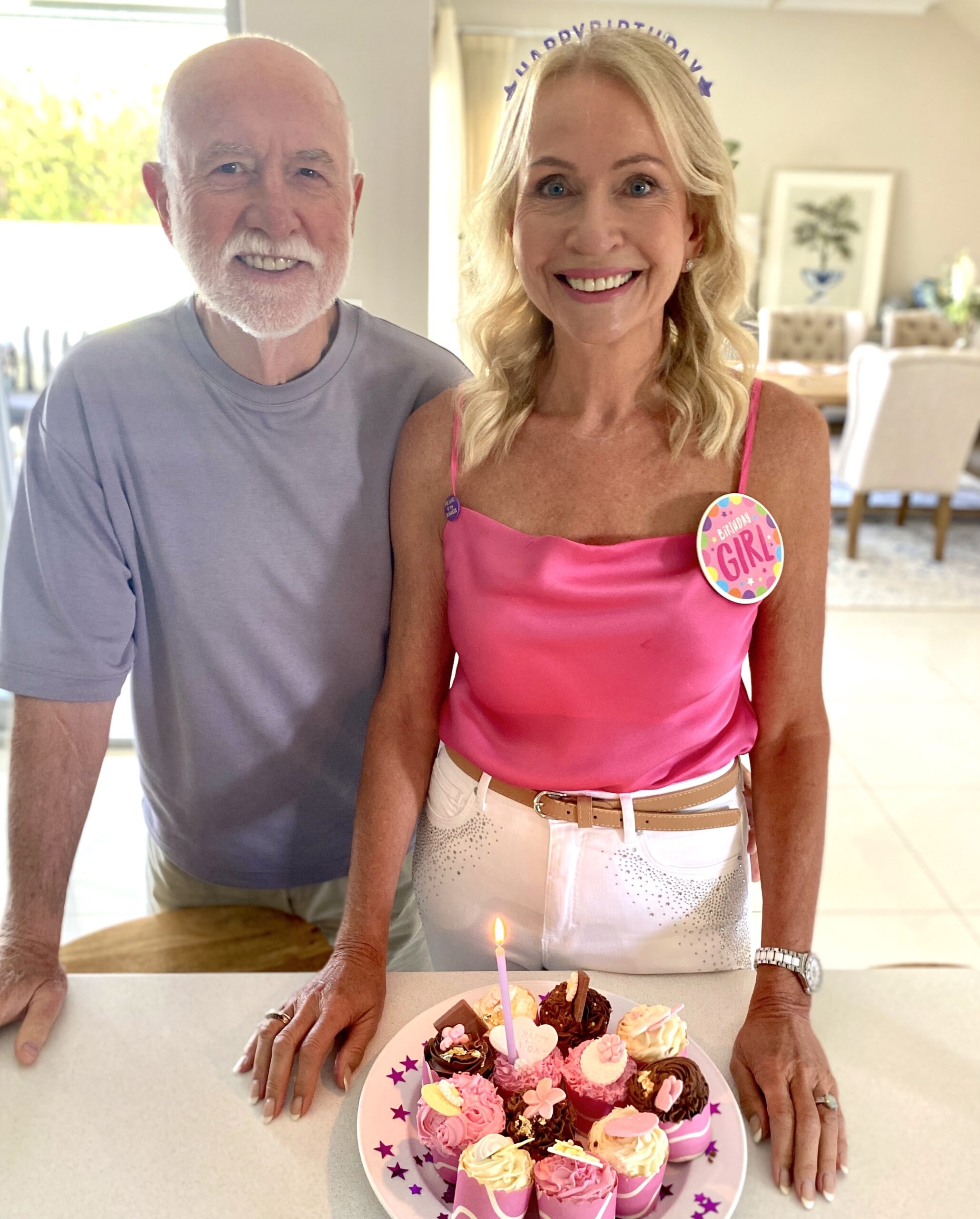When to eat might be as important a question as what to eat. VERNE MAREE spills the beans on how Roy and she are faring with Intermittent Fasting (IF) and Time-Restricted Feeding (TRF).
It’s not just what you eat that matters. When you eat is important, too. I’m a firm believer in both intermittent fasting and time-restricted feeding. If you’re not already on track, why not give it a try?
Fasting in general lowers blood sugar, suppresses insulin, reduces blood pressure, heals the gut, and activates the autophagy process, explains Siim Land, author of Metabolic Autophagy: Practice Intermittent Fasting and Resistance Training to Build Muscle and Promote Longevity. (With such a comprehensive title, you might even be able to get away with not reading the book itself.)

Intermittent Fasting in Singapore… not so easy!

Roy and I had success some years ago in Singapore with what’s known as 5:2 intermittent fasting. You eat normally for five days of the week, and for the other two you limit yourself to just 500 or 600 calories a day. If I remember rightly, that would often have been two boiled eggs for lunch, and a light vegetable soup for dinner. (Plus coffee for Roy, natch.)
We generally chose Mondays and Wednesdays for our light days. The trick, of course, is not to gorge on the other five days. Over a period of about six months or so, Roy did actually lose some weight and was feeling good – but we were doing so much socialising and international travel in those days that it wasn’t easy to stick to the plan.

I’ve done several longer water-only fasts in the past, up to five days – though not in recent years. For these longer fasts, I feel it helps to empty the fridge, take hot baths, go for gentle walks and nap frequently. I used to time my fasts for when Roy was away on a business trip, so he wouldn’t be affected; and I would avoid meetings and work from home. Since Roy retired in May 2016, however, that hasn’t been possible.
I can hardly imagine doing a water fast while cruising the French canals, for example. And for the past two years of confinement to WA, we’ve been following my Low Carb, No Crap® eating plan. Eating together has become a habit: a good one that neither of us wants to break.
Intermittent fasting is any eating pattern where you deliberately cycle between fasting and eating. It’s not just about cutting down on the amount you eat, though that’s part of it: I find that we naturally tend to eat less overall on these regimes. And when you’re paying attention to your diet, I find you’re more likely to make better choices. More important than the reduced calories, however, are the hormonal effects (insulin, leptin, ghrelin and more) of giving your body a break from food.
Time Restricted Feeding (TRF)
What’s wrong with feeding your face from the moment you get up to a pre-bedtime snack? – or even getting up at night to raid the fridge? In short, digesting food takes up a lot of energy, while giving your body a break allows it to concentrate on getting a good night’s sleep.
While you’re asleep: growth hormone is released and the body repairs itself; your sympathetic (fight or flight) nervous system chills out; your brain stays sane by processing the day’s information; cortisol (stress hormone) levels drop; your immune system releases anti-inflammatory cytokines to deal with stress, trauma or infection. And, importantly, autophagy kicks in. (For more on autophagy, see below.)

The idea of TRF is simple: instead of grazing at will, you eat only within a certain period, or “window”. Depending on your fasting tolerance, which you can work on building, your fasting-to-eating pattern could be as generous as:
12:12 – fasting for 12 hours, from say 8pm to 8am, which just about anyone can do, and eating your two or three meals between 8am and 8pm
Or 16:8 – fasting for 16 hours, from say 8pm to 12 noon, which seems to be the most popular choice.
Or even OMAD* – one meal a day.
Generally, both Roy and I vary between 16:8 and 18:6. The six-to-eight-hour eating window works amazingly well for us. In fact, though Roy had been an ardent breakfaster for most of his life, he made the transition remarkably easily… and he’s now convinced that time-restricted feeding has been one of the most important factors in helping him lose 35kg in 18 months and keep it off. (For details, see my Low Carb, No Crap® eating plan.)
* The Problem with OMAD
Though it frees up so much time spent on thinking about, cooking and eating, OMAD – eating one meal a day – could be problematic. In my opinion, it may be be fine to do a couple of times a week; but not every day, and not for the long term.
For one thing, it can be difficult getting enough nutrients in just one meal.
For example, say you’re aiming for a very reasonable 90g of protein a day.You’d have to eat 12 eggs, or around half-a-kilo of steak, chicken or salmon; or more than six cups of cooked beans. (I’ve just spent an hour in the pool with my trumpeting nearly-4-year-old grandson, Sam, after Carrie gave him beans for lunch – so, good luck with that!)
Add to that the seven-to-nine daily cups of fruit and vegetables recommended, and the problem becomes obvious.
(But if you could spin that meal out over say four or five hours, with different “courses”, you’d overcome the problem of overloading your stomach. That’s what I’d recommend, rather than 23:1.)

Skipping Breakfast – and the Great Breakfast Lie
Most advice on time-restricted feeding recommends skipping breakfast, but also not eating for at least three hours before bedtime. I find the first bit easy; the second less so.
Let’s start with The Great Breakfast Lie. Which is? “Breakfast like a king, lunch like a prince, and dinner like a pauper.”
Amazingly, if you look online – for example here – you’ll still find support for what is to me a hugely outdated way of thinking. But that holds true for a lot of mainstream health and medical advice, doesn’t it? Someone said it takes at least 17 years for new scientific findings to be adopted by the lumbering medical establishment – and I think that’s generous.
(And yet, and yet… when it suited the narrative, experimental drugs for our current epidemic were pushed through with criminal haste. But that was never about the science, was it? Let alone about our health.)
Porridge PTSD… or, I never liked breakfast anyway
In line with popular belief, our mother force-fed me and my baby sister Dale porridge every morning of our young lives. Dale was allergic and dangerously asthmatic from infancy – in a day when hardly any kids had allergies – and so picky that she had to be coaxed to eat at any time of the day, breakfast lunch and dinner. I was the opposite, blessed (or cursed) with a healthy appetite – but never first thing in the morning.
That relentless succession of Jungle Oats, mealie-meal (maize) porridge and maltabella (sorghum) porridge literally had me throwing up into my mouth every morning, mentally scarring me for life.When it was my job to get Dale to finish her bowl of maltabella, I’d lie to her that the brown gloop was chocolate.

In some ways, Weetbix was even worse. If only I’d been allowed to munch it alone, like a rusk or a biscuit… but no. It had to be drizzled with honey and drenched in hot milk… whereupon it grew like Topsy. Did you know that if you carry on adding hot milk to Weetbix it will inexorably expand until it overflows the bowl and eventually fills the entire room? Well, that’s how it felt to a gently retching child in the formative years of five to 15.
Worst of all, carbs don’t stick to your ribs. As a child, that starchy start to the day guaranteed that by 11am I’d be starving for my lunchbox sandwiches. I’m still like that: eating high-GI carbohydrates in the morning, especially, sets me up for serial cravings and a blood-sugar roller-coaster that can last all day long.
Eat Breakfast for Lunch
And if you do like a hot breakfast once in a while, you can just have it for lunch, like Roy and I do. Brunch, too, is a marvellous invention – just look how many cafés serve everything from eggs Benedictine to huevos rancheros right through to 3pm or later. (That’s true here in Australia, anyway. Some places – in Durban, particularly, take perverse pleasure in the antisocial practice of closing their breakfast menu at 11am sharp.)
Go to Bed Empty
Going to bed with a tummy full of stuff to digest is a really bad idea – and my next-morning Oūra ring Readiness score attests to that. (Click here for my blog post about Oūra’s fabulous sleep-tracking abilities.) And here below is visual proof that I ate too close to bedtime on 22 February – or possibly just ate too much, or ate something rich and heavy that required longer than usual to digest:

Though not eating for a minimum of three hours before bedtime can be difficult, it’s doable. I find that tricks like a cup of herbal tea, a relaxing bubble bath or going for a walk help take my mind off the dark, minty Lindt in the fridge.
Anatomy of Autophagy
That rolls nicely off the tongue, doesn’t it?
Autophagy, from the Greek auto (self) and phagy (eating), literally means “self-eating”. Described in this article as the body’s innate recycling programme, autophagy is “a regenerative cellular process”, where dead, damaged or diseased cells are broken down and their component parts reused. Apart from fasting, any sort of calorie restriction encourages autophagy, and so does exercise – especially in a fasted state. Autophagy could be the key to treating and preventing cancer and all sorts of chronic disease, according to the same article.
And then there’s the holy grail: longevity! Dr Jason Fung is one of the top guys in this field. He’s the acclaimed author of The Obesity Code: Unlocking the Secrets of Weight Loss, The Complete Guide to Fasting: Heal Your Body Through Intermittent, Alternate-Day, and Extended Fasting, and The Diabetes Code: Prevent and Reverse Diabetes Naturally. As such, he’s been interviewed umpteen times by all my favourite health podcasters.
“What we are describing is an entire rejuvenation process,” says Jason. He also points out that this powerfully therapeutic strategy is based on an entirely free and natural process. What a boon in a world awash with expensive supplements, drugs and surgical interventions.

Running on Empty?
I remember those 16km Durban Sunday morning training runs with my lean and wiry jogging friend Pat, way back in the previous century. Pat was always starving, driven mad by the aromas of bacon drifting from suburban kitchens along our path. I, meanwhile, wouldn’t bother to eat until hours later. In short, she was a breakfaster and I wasn’t.
Just as we’re all different when it comes to breakfasting, some of us exercise best on an empty stomach. Not just for yoga – it’s generally accepted that it’s better not to eat before a yoga session – but also for more strenuous stuff like training for or running a race. (I’m not talking about elite racers here; they’re a different story.)
I haven’t run a race for some time, and who knows if or when I will again. But I’ve never eaten before a race. In our Singapore days, I loved to run a Sunday morning 10K or even half-marathon – on an empty stomach, natch – go home for a shower and a power-nap, then get all dressed up for one of those fancy, all-the-champagne-you-can-drink Sunday brunch buffets at the Ritz-Carlton, the Fullerton or the Hyatt. A plate of oysters and a glass of Veuve would be the first thing to pass my lips all day… it felt thoroughly decadent, yet strangely deserved.
Well, I so enjoyed looking back at these old Singapore pics, so let me wind things up with another couple of nostalgic images from our days in that amazing country. With any luck, it won’t be too long before we’re allowed to go there again.


Up next? Maybe something on orthorexia…






















